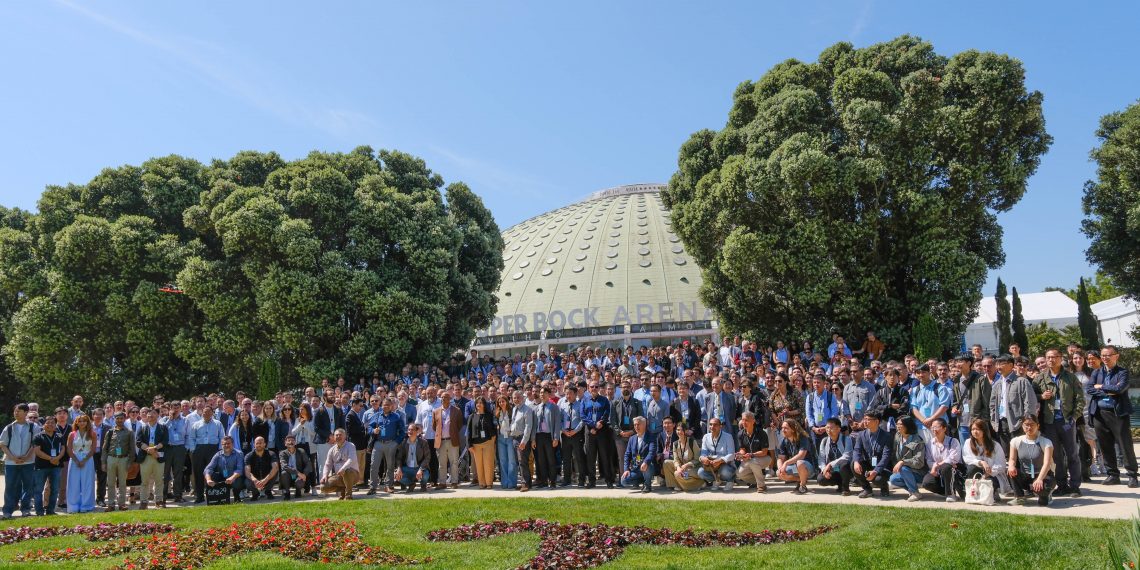The world’s leading forum on fibre optic-based photonic sensors took place in Porto for the first time, bringing together experts from across the globe to discuss the latest scientific and technological advances in the field.
INESC TEC organised the 29th International Conference on Optical Fibre Sensors (OFS29), gathering more than 600 participants from 40 countries. Over the course of five days, the attendees explored three main areas.
First came quantum optical sensors; José Luís Santos, INESC TEC researcher and General Chair of the event, explained that these sensors hold “potential performance levels far beyond what is currently achievable”, assuring that “long before we witness the arrival of quantum computers, we will observe the emergence of quantum sensing – which is, in fact, crucial to reaching quantum computing”.
OFS29 also highlighted advances in optical sensors for detecting biochemical variables, both in living organisms and in remote environmental monitoring. These developments show strong potential for applications in healthcare and sustainability.
However, one of the most prominent areas at the event was distributed sensing, which has now reached an impressive level of technological maturity. “Take a huge structure – for example, the Faculty of Engineering at the University of Porto,” explained José Luís Santos. “Specially coated optical fibres are embedded into the walls of every room during construction (in theory, a single fibre could suffice, since it can span several kilometres). When someone speaks in a room, acoustic waves are generated and detected by the fibre running through the walls.” This is an extremely subtle effect – but one that can now be detected thanks to recent breakthroughs. With this technology, a security team member could, for example, clearly hear what is happening in a distant room. “Incredible, but also a bit unsettling,” the researcher admitted.
Lectures, oral and poster presentations, workshops and a technical exhibition made the 29th edition of the Conference a hub for researchers, companies and institutions working at the forefront of optical sensing, promoting knowledge sharing, scientific discussions, and the demonstration of the latest technological innovations in the field.
José Luís Santos emphasised that hosting an event like this is not only a recognition of the country’s scientific excellence in the area, but also a testament to the trust placed in INESC TEC and the scientific team to lead the organisation of OFS29. “The fact that the conference was held in Portugal, in Porto, and organised by INESC TEC, translates into significant prestige for the country and the region,” he concluded.
The conference usually takes place in different regions – Asia, Europe, and North America, where next year’s edition is expected to take place.
INESC TEC’s scientific contribution
The event recorded a new milestone in the number of paper submissions by country, compared to previous editions: 382 papers were accepted in the regular submission process, along with 13 post-deadline papers, with participation from authors based in China.
Portugal made a strong contribution, with 35 accepted papers in total.
INESC TEC stood out with the presentation of 15 poster papers and one oral presentation, covering a wide range of topics in optics and photonics. These included microfabrication, fibre optic sensors, distributed acoustic sensing, spectroscopy, and spectral imaging.
Researcher Catarina Monteiro presented the work “Enhancing a Polarimetric Fiber Sensor Using Fisher Information”, which focuses on developing a new mathematical model based on Fisher Information to optimise polarimetric sensors. The study demonstrated significant improvements in strain measurement and acoustic signal reconstruction, contributing to the advancement of multimodal distributed sensors. The work was carried out in collaboration with Tiago Ferreira, Carolina Gonçalves, Orlando Frazão, and under the supervision of Nuno Silva.
The researcher mentioned int his news piece is associated with INESC TEC and FCUP-UP.



 News, current topics, curiosities and so much more about INESC TEC and its community!
News, current topics, curiosities and so much more about INESC TEC and its community!